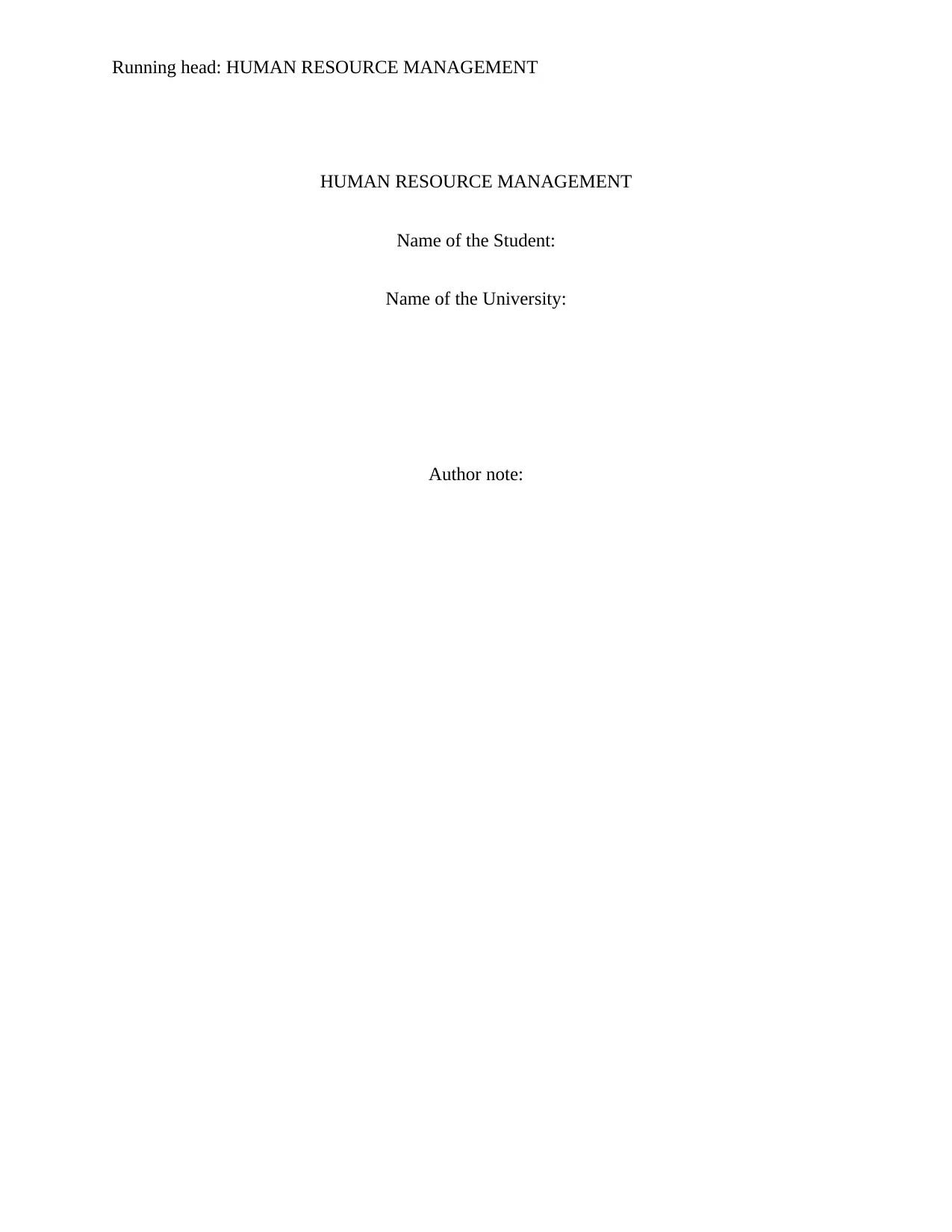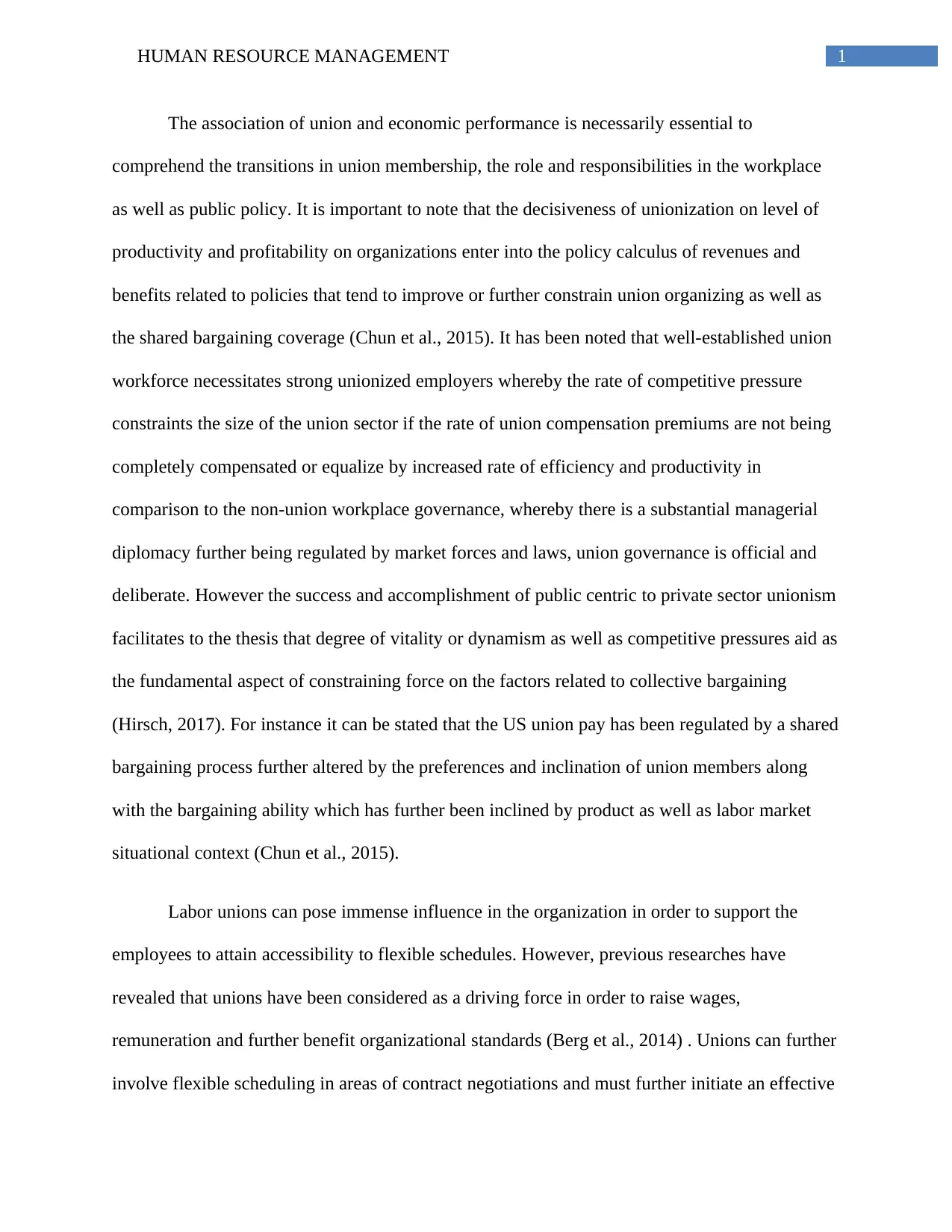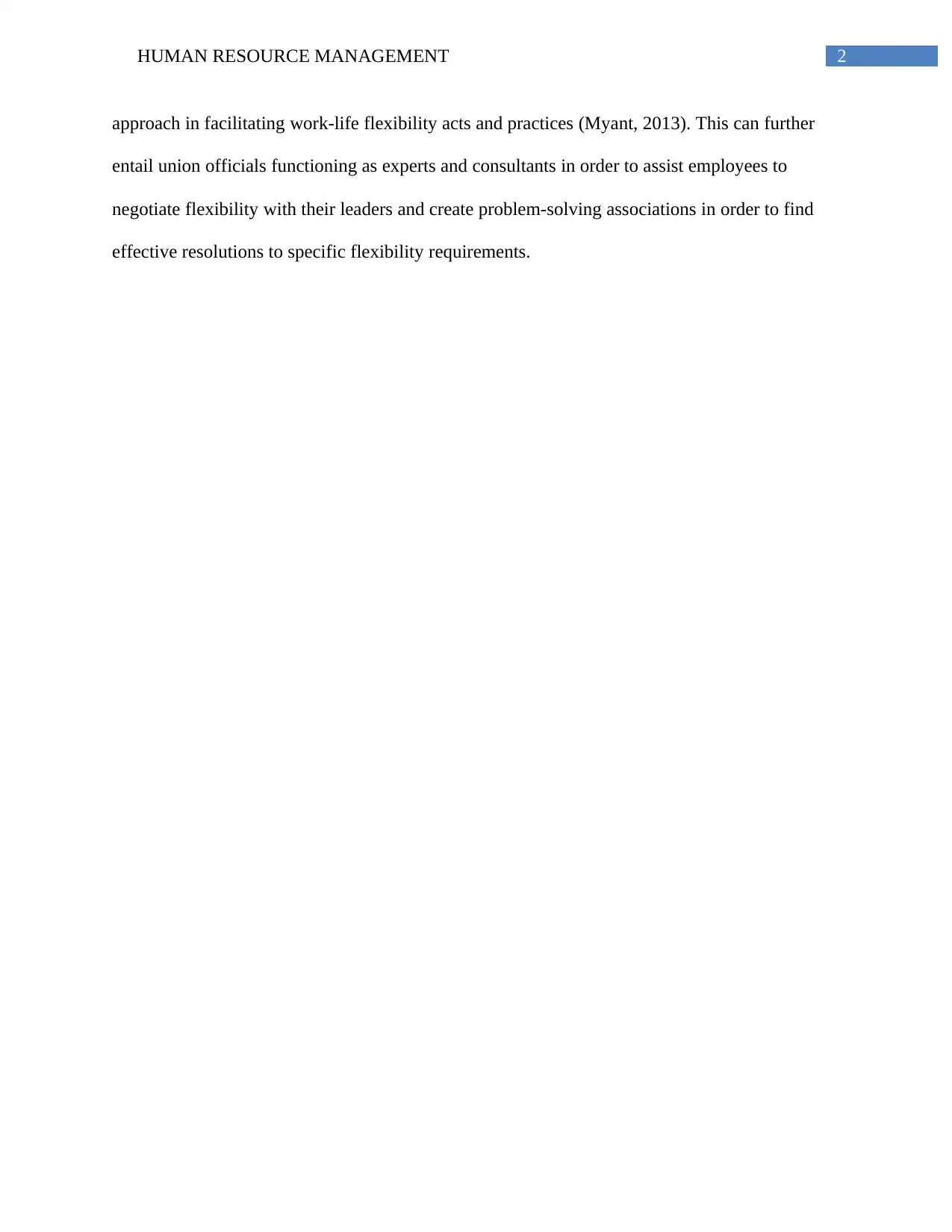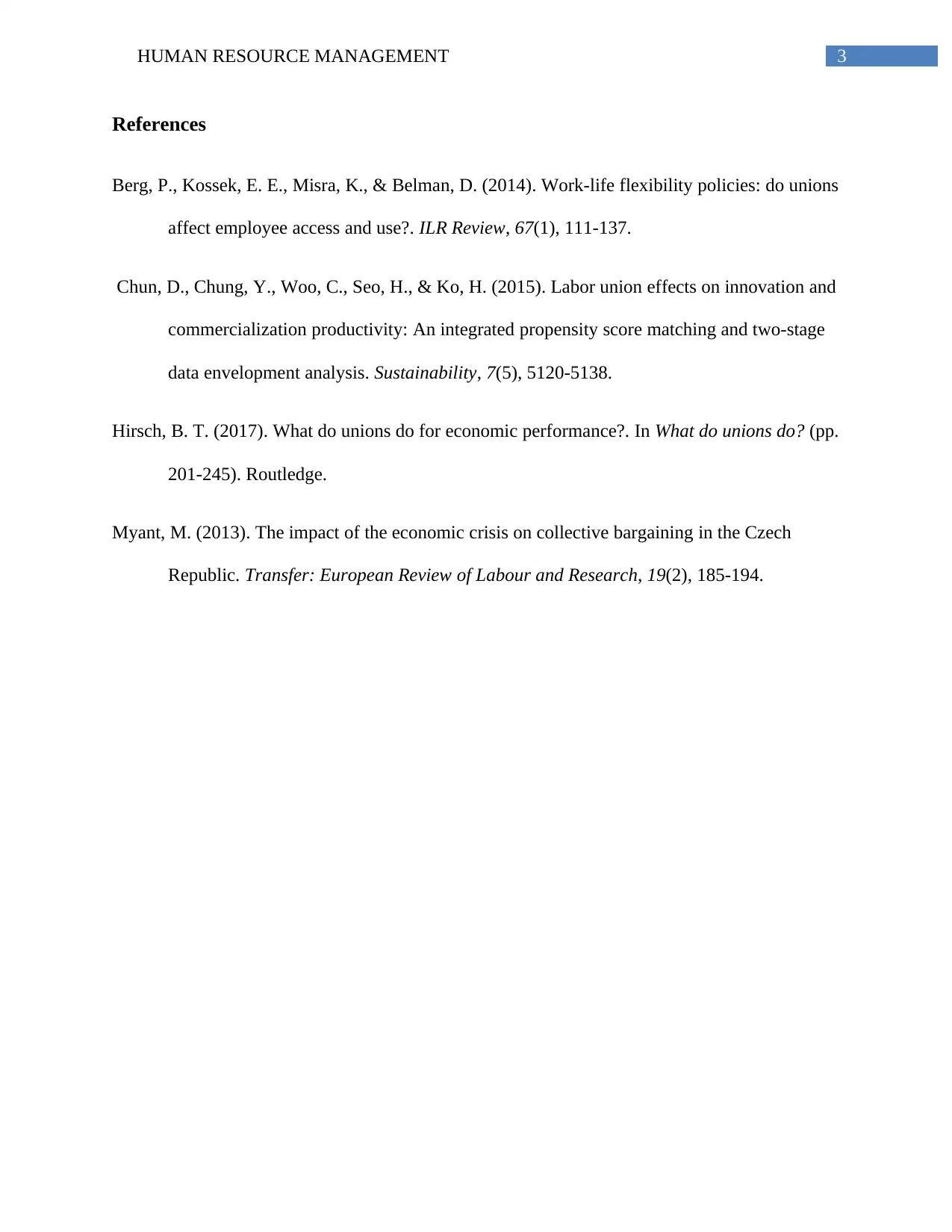Analyzing Union's Role in Economic Performance and HRM Practices
VerifiedAdded on 2023/06/10
|4
|591
|472
Essay
AI Summary
This essay examines the intricate relationship between labor unions and economic performance, emphasizing the significance of understanding union membership trends, workplace roles, and public policy implications. It evaluates the impact of unionization on organizational productivity and profitability, considering the balance between union compensation premiums and efficiency gains compared to non-union settings. The analysis extends to the influence of collective bargaining on wages and the role of unions in promoting flexible work schedules and improved organizational standards. The essay concludes by advocating for effective HRM approaches that facilitate work-life flexibility through contract negotiations and problem-solving associations, providing a comprehensive overview of unions' multifaceted role in shaping economic and workplace dynamics. Desklib provides access to similar essays and study resources for students.
1 out of 4





![[object Object]](/_next/static/media/star-bottom.7253800d.svg)